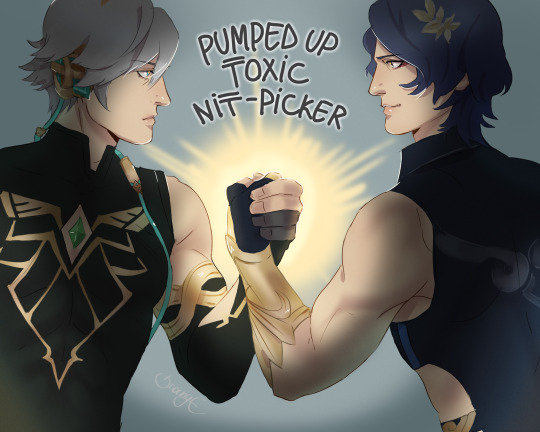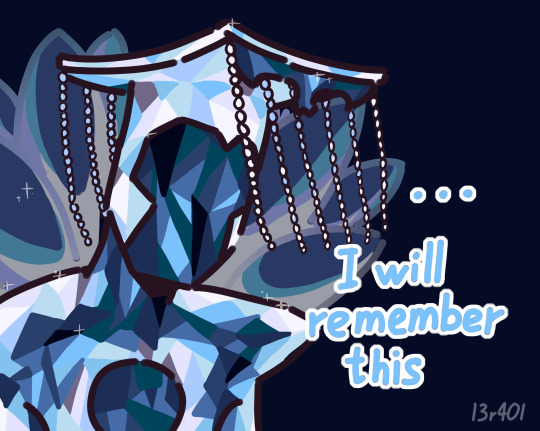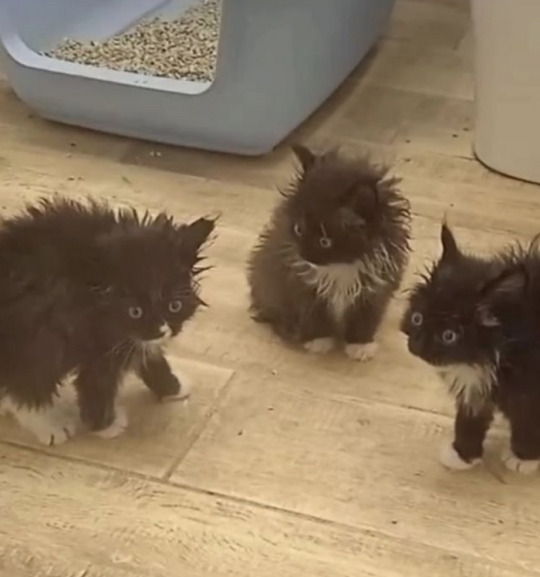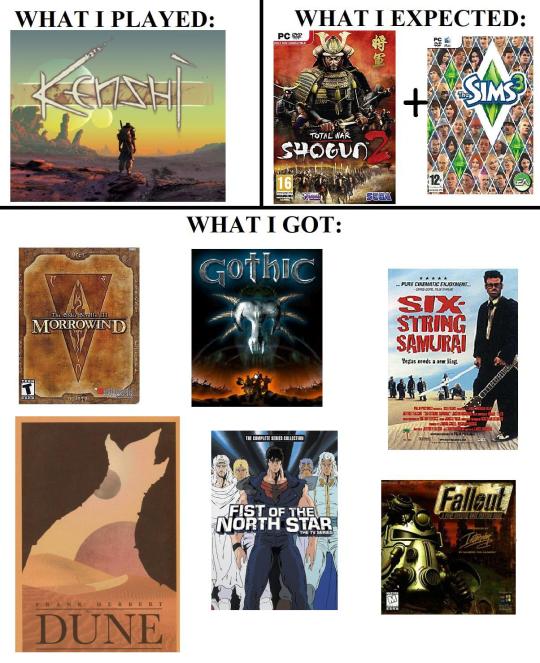Text
Screwllum: We all have our demons.
Screwllum: [gestures to Herta, Ruan Mei and the rest of the Genius Society]
Screwllum: These are mine.
400 notes
·
View notes
Text
the REAL plot of rune factory 5 is me giving this autistic blacksmith twink piles of scrap metal every day until he agrees to go out with me. we will get married on a 1:1 recreation of the Great Pacific Garbage Patch made of all the junk i've given him while courting him like a crow bringing him bits and baubles
111 notes
·
View notes
Text
An Interview with Ryutaro Ito (Megami Tensei)
The Megami Tensei series is nothing short of a miracle.

Profile
While working at Atlus Co., Ltd. Ito worked on the Nintendo Entertainment System (NES) title Digital Devil Story: Megami Tensei II, going on to write the scripts for the Super Nintendo Entertainment System (SNES) titles Shin Megami Tensei, Shin Megami Tensei II, Shin Megami Tensei if… and the SEGA Saturn title Shin Megami Tensei: Devil Summoner. He currently works as a senior producer at Smart System Co., Ltd.
Known for its devoted fans, Megami Tensei rightly deserves its legendary status. In this interview, series veteran Ryutaro Ito told us countless secrets and stories relating to the development of this role-playing game masterpiece.
Landing the Job
Could you tell us a bit about how you ended up working in the games industry?
Just before joining Atlus, I actually worked part-time during my student years at a company named AD TECHNOS which made board games. Obviously there’s no direct connection between board games and the NES/computers in general, but board games were very popular at the time.
After that job, I moved on to write for a niche magazine named SIMULATOR which exclusively covered simulation games. It just so happened that the editor-in-chief here was Ginichiro Suzuki[1] who one day suggested I try working for the company that employed his son[2], Atlus. At the time I didn’t even know Atlus made NES games, never mind Megami Tensei.[3]
[1] The father of Kazunari Suzuki, one of the men responsible for creating the Megami Tensei series. Ginichiro himself is most well known for designing several board games and tabletop RPGs.
[2] Kazunari Suzuki. Oversaw the production of the Megami Tensei series. Nicknamed the “archbishop”.
[3] An RPG published by Namco in 1987. Popular at the time for its revolutionary game systems that allowed the player to add enemy demons to their party, synthesizing multiple demons to make stronger allies. It was notable for its story which involved not just the protagonist, but various gods and demons.
So you got the job at Atlus thanks to meeting Ginichiro then.
That’s correct. However, I was pretty strapped for cash at the time so when I went for the interview, I only had enough train fare to cover a one-way journey. Luckily I started working for Atlus the day after my interview, but I wound up having to ask, much to my embarrassment, if the interviewer could lend me ¥50,000. (laughs) What’s more, I frequently showed up late for work, which obviously didn’t go down too well with the company. Then, one day, I was told “If you manage to be on time for 2 weeks straight, we’ll give you the job full time. But if you’re late even once during this period, you’re fired!” By this time I had become fairly adept at being late, but the chance of ending my time as a part-timer was too good to pass up. It was all going smoothly until the final day of those two weeks when I slept in but somehow made it to work in time by catching a cab.
I’m still amazed even now that they actually employed someone as lazy as me though. I know I certainly wouldn’t have had I been the interviewer!
What was your first job upon joining Atlus?
I was a game tester for King of Kings[4] and Battle Fleet.[5] I ended up working on these projects as they needed someone familiar with simulation games to test out the two titles.
[4] A simulation game published by Namco in 1988. Known at the time for its fantastical characters that included elves, goblins and dragons.
[5] A simulation title that gave you command of a fleet of planes, tasking you with defeating the enemy garrison. Published by Namco in 1990.
Did you play many NES games at the time?
I’d played on the console at my friend’s house before joining Atlus, but I didn’t actually own one myself. Honestly, I didn’t think much of home consoles at the time, but that all changed when I first saw Dragon Quest. I was astounded that something so ambitious could be created on the NES. I obviously realised that I couldn’t very well work for a company developing NES titles and not own the system so I went out and bought one with my first paycheck.
I don’t mention this too often, but I actually hadn’t played Megami Tensei before joining Atlus. I’m pretty sure I remember picking it up from a bargain bin in a game store somewhere in Shinjuku after buying the NES. (laughs)
A Date with Destiny: Megami Tensei
We’re correct in saying that your first involvement with the Megami Tensei series was working on the second title, Megami Tensei II?
Indeed, development had actually already started on Megami Tensei II[6] when I joined the company. So I effectively started helping out half way through.
[6] The second title in the series, published by Namco in 1990. This entry had a refined demon synthesis system and placed a much greater emphasis on story, with multiple endings that depended on player choices.
In that case, what parts of the game were you personally responsible for?
The script, designing the 3D maps and writing the conversations the player has with the residents of each town. I played each area I designed to test for bugs so much that I had them all memorised.
We still remember just how passive aggressive the shop owners in the game were, greeting the player with the line “What? Oh, a customer…” Were you responsible for this?
I most certainly was. As I’m sure you know, your standard game’s shop owners would almost certainly speak very politely to the protagonist. But I felt like it would be pretty fun if we had shop staff that gave you some no-frills customer service. That was when the aforementioned line popped into my head, something which I don’t think I would’ve been able to put in any game that wasn’t in the Megami Tensei series.

The map in the sequel felt much smaller than that of the first Megami Tensei. Was there any reason as to why you decided to decrease the scale of the game?
Actually the map in II is about the same size as the first game’s, so it’s not completely fair to say we made it smaller. I would guess that the reason II feels smaller than the first title is down to the fact that we had 2D areas mixed in with 3D maps. The original title contained no 2D maps, with each floor being fully 3D from beginning to end so I can see how it would feel bigger when compared to II. By the time I joined the project, other team members had already suggested that the sequel should do away with the meandering maps of the first game. We were really focused on making sure that the player didn’t feel any unnecessary pressure due to the map design.
The scene in which the protagonist has their arm bitten off[7] was incredibly shocking. I still remember being convinced I’d made some kind of fatal error.
I’m fairly confident in saying that no other game had a scene in it like this. I myself was keenly aware of just how grotesque it was. I certainly don’t think you’d see anything like it in modern games now that the graphics have progressed so far.
[7] An infamous scene where the protagonist’s arm is torn off by the Truthsayer. Your status becomes “LOSARM” and every step taken from that moment on causes your health to decrease. This scene was inspired by a certain space opera film.
When you head back to the shelter after defeating YHVH and turn on the Devil Busters game, you’re greeted with the message “PROGRAMMED by A.NAKAJIMA”. Was this an homage to the original game?
I basically just put it to get a smile out of anyone who was familiar with the Aya Nishitani novel.[8]
[8] Megami Tensei, The first book in Aya Nishitani’s Digital Devil Story series (published by Tokuma Shoten in 1986). Its story was the inspiration for the first Megami Tensei game.
The Megami Tensei series is known for the various gods and demons from religions and fairy tales across the world that appear in the game. We would imagine you’d need to be fairly knowledgeable to work on the series.
Actually in my case, I became much more versed on religion and fairy tales after starting work on the Megami Tensei series. Mr. Kaneko[9] and Mr. Suzuki were by far more familiar with the game’s themes, their knowledge stretching as far as the occult. I had my hands full learning enough just to keep up with them. In fact, I would imagine that hardcore fans of the series are much more informed than I am.
I should also mention that I had been interested in history since long before I began working for Atlus, so I at least had a basic knowledge of religions that were historically significant. The rest I studied myself, but it never once felt like a chore.
[9] Kazumo Kaneko, lead character designer for the Megami Tensei series. Also known as the “Demonic Painter”.
The next title in the series, the first on SNES, Shin Megami Tensei[10] was a big success for the company.
It was also the first game to be published by Atlus directly instead of Namco. We actually got a lot of complaints demanding to know why Namco were no longer the publisher which was a little disheartening to say the least. (laughs) But sales-wise it did pretty well so I can’t complain.
[10] Published by Atlus in 1992 for the SNES. Depending on the player’s actions, the protagonist would align with law, chaos or neutral, changing the outcome of the story with multiple endings obtainable.
The game’s popularity was in no small part down to the system that, depending on the player’s actions, changed the protagonist’s alignment, affecting how the story played out . This gave the game plenty of replay value.
As Shin Megami Tensei was essentially a remake of Megami Tensei II, the staff all had an implicit understanding that the game would have the characters Law Hero and Chaos Hero, with the protagonist starting from a neutral standpoint, their future actions then determining their alignment. The staff all being on the same page meant that production progressed seamlessly, we didn’t even need to have meetings to match up character dialogue with artwork as everyone inherently understood that the game’s world was a dangerous, shady place. Good projects are always made this way, the ideas flow naturally and everything just falls into place.
Personally speaking, when it comes to RPGs, I prefer to place an emphasis on the protagonist’s entirely subjective point of view. I’m really not a fan of games where the protagonist completely ignores the player’s wishes and acts independently.
The starting point for Shin Megami Tensei is Tokyo’s Kichijoji, was there any particular reason as to why you chose this location?
By the time I had joined the project it was already set in stone that Tokyo would be the game’s setting. This was decided by Mr. Suzuki and Mr. Kaneko. However, it was apparent that their decision had been influenced by manga such as Violence Jack, Devilman and Fist of the North Star.
The previous game had a post-apocalyptic setting, where the world had been scorched by nuclear weaponry, which led to the team wanting to depict a period before the bomb had dropped. Of course there’s no way we would have been able to reproduce all of Tokyo in map form, so we decided to choose somewhere that would fit with our map-size limitations. The result is the map structure that you see in the game, where Kichijoji is the starting point. If you try to go too far afield in Tokyo, you’ll be blocked by a squad of riot police who tell you “We can’t let you advance beyond this point.” However, the real reason they’ve cordoned off these areas is simply because we didn’t want to player to go to parts of Tokyo we couldn’t program into the game.
Basically, there was no real reason for choosing Kichijoji, any suburban area of Tokyo would have done. It just so happened that Mr. Kaneko lived there at the time, I myself lived in the nearby Nishi Ogikubo and Mr. Suzuki had been to Kichijoji many times in the past, meaning that it was an area we were all familiar with. One of the dungeons in the game was actually based on an abandoned building[11] located just in front of Kichijoji Station. It was an odd place, with two floors filled with arcade cabinets and the rest feeling like a sort of dark and dirty ghost town. We couldn’t understand how a building in such a prime location could remain unoccupied, this fascination prompting us to eventually include it in the game.
[11] The Terminal Echo building which currently containts the Yuzawaya Kichijoji store. It was bought by the Keio Corporation for ¥1.2 billion and remained deserted for almost 20 years before Yuzawaya moved in.
Shin Megami Tensei if…[12] stands out in the series due to its markedly different school setting. Why did you choose this setting for the game?
After the previous game, Shin Megami Tensei II[13], we felt that we’d taken the concept of a large-scale chaotic world ravaged by gods and demons as far as it could go. We then had the idea of doing a sort of side story where a portal to Hell suddenly opened up in a school with a smaller-scale game world, but one that was entirely in 3D. I personally had a great time working on the game.
[12] Features a high school protagonist whose school is suddenly plunged into Hell. The story progresses as the protagonist unravels the school’s mysteries, embarking on an adventure through Hell’s dungeons with his classmates. Notably contained a side story that was only playable after clearing the game once.
[13] The sequel to Shin Megami Tensei, released in 1994. Set several decades after its prequel, the game focuses on the Old Testament’s Tree of Life.
In if… when your party were killed, a guardian would appear and teach the player magic. Why did you decide to include this unique system which, in a way, validated the player’s failures?
We wanted to include the concept of resurrection after death, in other words, the idea of “tensei” (reincarnation). The idea was to enable the player to continue to enjoy the game even if their party died. We also wanted it to act as a kind of lifeboat for players who just kept getting killed no matter what they did.
Actually after we’d finished up work on II one of our staff quipped that “No one got reincarnated this time either.” It was nice to finally get the “tensei” concept into the series, in line with its title. (laughs)
Shin Megami Tensei: Devil Summoner[14] features a scene where an ancient princess is reincarnated. Did you include this for the same reasons?
You’re spot on. We were very deliberate in including a scene like that from the get go.
[14] A Sega Saturn title released in 1995. Set in the fictional Hirasaki City, devil summoner Kyoji Kuzunoha embarks on a quest to combat demons. After the release of this title, Devil Summoner became its own spin-off series, with several titles being released under this name to date.
Various publishers released official guidebooks for the Megami Tensei series, a few of which contained accounts of the development team going on “purification tours”. How did these tours come about?
We first went on one of these during the development of Shin Megami Tensei. We originally started doing them after taking inspiration from the author of the manga Devilman, Go Nagai.[15] One of our staff was also robbed which led to us deciding to make sure we routinely performed these purifications. At first we only went to two locations, Hariti Temple in Zoshigaya and the grave of Taira No Masakado, but after a while we also made a habit of visiting Kanda Shrine. As the series became increasingly successful sales-wise, reporters from the enthusiast press started tagging along, covering our visits.
[15] While writing Devilman, it’s said that the author was cursed and fell into a slump as a result. After performing an exorcism with the aid of the god Hariti, he successfully overcame his troubles. Following in his footsteps, the Megami Tensei development team have taken to performing exorcisms pre-production on new games.
Ito’s Insights: Hidden Tales from the Series’ Development
I’ve heard that there are many models for the characters that appear in the Megami Tensei series. In particular, I’ve always wondered if there was anyone you drew inspiration from when creating the president of the Suzuki Company which appears in Megami Tensei II.
I imagine you may well have already guessed, but he was based on none other than Mr. Ginichiro Suzuki.
Would we then be correct is assuming that Thorman, who works for the American Embassy in Shin Megami Tensei, is based on former US President Truman?
Actually we took the name from the Northern European legend of Thor. It was only after the game’s release that I realised the name of the president who dropped the nuclear bomb on Japan was Truman. I admit it does all seem a little too coincidental though. I’m starting to wonder if the staff might have been possessed by something back then…
Were there any models for the characters in Shin Megami Tensei II?
Plenty! For starters, the protagonist’s mentor, Okamoto, was named after the owner of the building Atlus occupied at the time and Matsumoto was named after my first landlord in Tokyo. Mekata, who sets off a bomb in the Millennium Center, was named after a female reporter on NHK. Oh and I just remembered another one – red bear – one of the enemies in the game had its name borrowed from the evil organisation in Aikoku Sentai Dainippon.[16] It didn’t seem like many Megami Tensei fans caught onto this at the time though.
[16] A short superhero film produced using 8-mm film. Created by director Hideaki Anno and the staff at DAICON FILM, many of whom would later join GAINAX.
Is it true that your face was the model for the often-bullied Chaos Hero in Shin Megami Tensei?
I was told by Mr. Kaneko afterwards “I designed him while looking at your face and it wound up looking like this.” (strained laugh) Actually, Ideo Hazama, one of the protagonist’s classmates in if…’s name was a play on Kuro Hazama, the protagonist of the manga Black Jack. We also named him that way as Ideo is just what his name says, the threshold (hazama) between man and demon.
And the ever-elusive wheelchair-bound inventor of the Demon Summoning Program Professor Stephen, I’m assuming he was based on renowned physicist Stephen Hawking.
Indeed he was. Professor Hawking is known for using physics to refute the notion that the universe was created by God, an idea that still has much support in Europe and America. This is why, in the game world, he plays the role of neutral messenger.
Similarly, Sato, a member of the school computer club in Shin Megami Tensei if…, had his name taken from physicist Katsuhiko Sato. We chose his name as the real Professor Sato was responsible for translating Professor Hawking’s works into Japanese, essentially making him the person responsible for introducing Hawking’s theories to Japan. This is also why he’s the one to bring up the Demon Summoning Program in the game.
Is it correct to then assume that Akira Miyamoto appeared in if… for similar reasons relating to Devilman?
Correct. In the manga of Devilman, Akira fuses with Amon, which reminded us of the famous performer Amon Miyamoto, so we went with the surname “Miyamoto”. It really was that simple.
Reiko Akanezawa, Shinji Kuroi and Yumi Shirakawa’s names were all based on players who belonged to the old Tokyo Senators baseball team too.
You were the one who penned the lyrics for the Keikozaka High School school song that plays during the game’s climax, correct?
I did. You only hear the first verse’s lyrics in the game, but I actually wrote three verses. When I first asked Mr. Masuko[17] to add the lyrics to the music, he looked distinctly unimpressed. (laughs) One interesting fact, I actually used some of the lyrics from my own school’s school song for the game. The school building’s design was also based on my school as there were no good reference photos of high schools at Atlus so I used my school album.
[17] Tsukasa Masuko, composer for the Megami Tensei series.
What was the inspiration for the name of the setting in Devil Summoner?
We took the name from an area near Atlus where publishing company SHUEISHA were located: Yayoimachi. As for Hirasaki City, we took one kanji each from Hiratsuka and Kawasaki in Kanagawa Prefecture. It was also a slight reference to Heijo City in Aikoku Sentai Dainippon (“Hei” and “Hira” are the same kanji in Japanese).
You’ve taken us pretty far down the rabbit hole…
Yeah, looking back on it now I may have been slightly obsessed. My apologies for how ridiculous this all is. (laughs)
Good Games Mean Little Without Sales
While you’re no longer involved in the series’ development, what do you make of your time working on Megami Tensei at Atlus?
One thing I’m sure of is that Megami Tensei is not a game that could be created through meticulous planning. It’s the kind of title that is born when a group of creative people get together and put all their ideas in one pot. In some ways it’s a small miracle. I didn’t realise it at the time as I was completely immersed in making the game, but I was incredibly lucky to be a part of that team. Who knows, maybe I was destined to join Atlus.
What was it that you wanted to tell the player through Megami Tensei?
“Your fate is in your own hands!” After all, the player’s actions alter their alignment, what ending they see, essentially everything in the game is down to player choices. Equally, it’s also entirely on you if you stay up all night playing games and then get told off by your teacher the next day at school for sleeping in class. (laughs)
Are there any parts of game development that you’re especially fussy about?
There’s no point in making a game if it has no sales potential. Making something purely for your own self-satisfaction is no different from masturbation. On the flip side, that also means that as long as it sells, you have complete creative freedom to put whatever you want in the game.
Finally, would you care to give some advice to those hoping to one day work in the games industry?
Be someone that has a wide variety of interests. You can’t expect to be able to plan and write interesting games if you yourself absorb nothing but games.
Interviewer’s Notes
Incredible Ideas Born From Rampant Curiosity
The Megami Tensei series is by no means easy, but there’s a special charm hidden within every title, that grabs the player and never lets them go, one could almost describe it as fiendishly addictive. We hope that you were able to see through this interview how Ryutaro Ito’s constant thirst for knowledge contributed to the creation of the series’ countless unique characters and stories.
Megami Tensei was only possible thanks to a perfect storm of ideas from Ito, Suzuki, Kaneko, Masuko and all the other staff involved at Atlus. We would also like to encourage all of you who have never played an entry in the series to give it a try. We can guarantee that you’ll be blown away by the raw creativity present in these masterpieces of game history.

*This is a translation of Chapter 4 from the book Game Shokunin. Please support the writers by purchasing it here:
http://www.amazon.co.jp/%E3%82%B2%E3%83%BC%E3%83%A0%E8%81%B7%E4%BA%BA-%E7%AC%AC1%E9%9B%86-%E3%81%A0%E3%81%8B%E3%82%89%E6%97%A5%E6%9C%AC%E3%81%AE%E3%82%B2%E3%83%BC%E3%83%A0%E3%81%AF%E9%9D%A2%E7%99%BD%E3%81%84-%E9%B4%AB%E5%8E%9F-%E7%9B%9B%E4%B9%8B/dp/4896372670/ref=sr_1_2?ie=UTF8&qid=1422263219&sr=8-2&keywords=%E3%82%B2%E3%83%BC%E3%83%A0%E8%81%B7%E4%BA%BA
62 notes
·
View notes
Text
indomitable queer spirit vs. the abject cruelty of society
trans shonen anime
7K notes
·
View notes
Text
The only way they can restore trust to unity is if they take John ricctiello out back and execute him (they should)
0 notes
Text

Francisco de Goya (Spanish, 1746-1828)
Christ Crucified, 1780
Museo Nacional del Prado
“For God so loved the world, that he gave his only begotten Son, that whosoever believeth in him should not perish, but have everlasting life” (John 3:16). - The Bible.
167 notes
·
View notes
Text
True agony is searching the kenshi hashtag and getting the character instead of the game
5 notes
·
View notes
Text
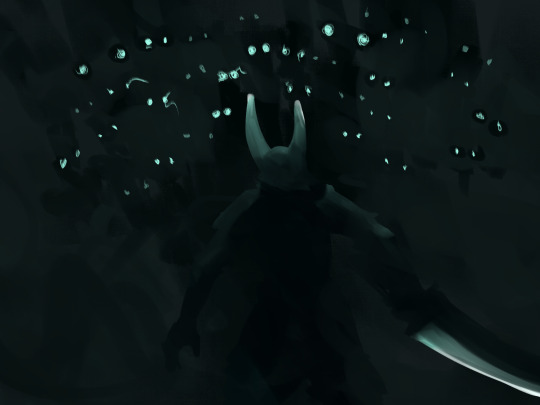
In the terrifying depths of the fog Ruka earned her horns
16 notes
·
View notes
Text
obsessed with this. theres something so wrong with him.
50K notes
·
View notes
Text
tumblr friendships are hard to maintain like im sorry i know i havent talked to you in 5 months but you’re still super rad and i still consider us friends im just dumb
1M notes
·
View notes
Text
Just watched a movie, I have changed irreparably.
1 note
·
View note
Quote
To be a serious writer requires discipline that is iron fisted. It’s sitting down and doing it whether you think you have it in you or not. Everyday. Alone. Without interruption. Contrary to what most people think, there is no glamour to writing. In fact, it’s heartbreak most of the time.
Harper Lee (via writingdotcoffee)
1K notes
·
View notes

